Orchids are delicate, unique, and beautiful to behold. Yet they have a reputation as being somewhat challenging to care for. One of the most common sources of confusion is around how often to water orchid plants.
Both over-watering and under-watering can cause damage to roots, leaves, and blossoms and eventually kill the orchid.
In this care guide, learn the answers to essential questions about watering and other basic care needs for these singular plants.
Learning About Your Orchid Plant
The first step when learning how to care for your orchid plant properly is to do your homework. As best you are able, find out what the native climate is for your particular varietal of orchid.

According to the Rainforest Alliance, there may be as many as 30,000 different species of orchid today!
There are four basic types of orchid plant:
- Epiphyte (most common): these orchids grow on trees or plants.
- Subterranean: these orchids grow underground.
- Lithophyte: these orchids grow on rocks.
- Soil: these orchids grow in a soil base.
Each type of orchid has different basic needs to thrive. As a rule, orchids are either pan-tropical, which means they can grow successfully and become established in all but the coldest areas, or they are endemic, which means they need a specific type of climate to thrive.
Whether they are pan-tropical or endemic, there are two things that nearly all orchids share in common:
- Orchids typically take their moisture from the air, rainfall or soil moisture.
- Orchids lack an established water-retaining root system, so they rely on symbiotic fungi called mycorrhizae to help the orchid absorb water and other essential waterborne nutrients.
How to Water Orchids
In most cases, your orchid will come accompanied by a basic care guide. However, you won’t know how or how well your orchid was cared for before it came to you, and whether it is already under stress or is thriving and well.
Here are some great tips from the American Orchid Society for how to water orchids:
Mist, don’t drench
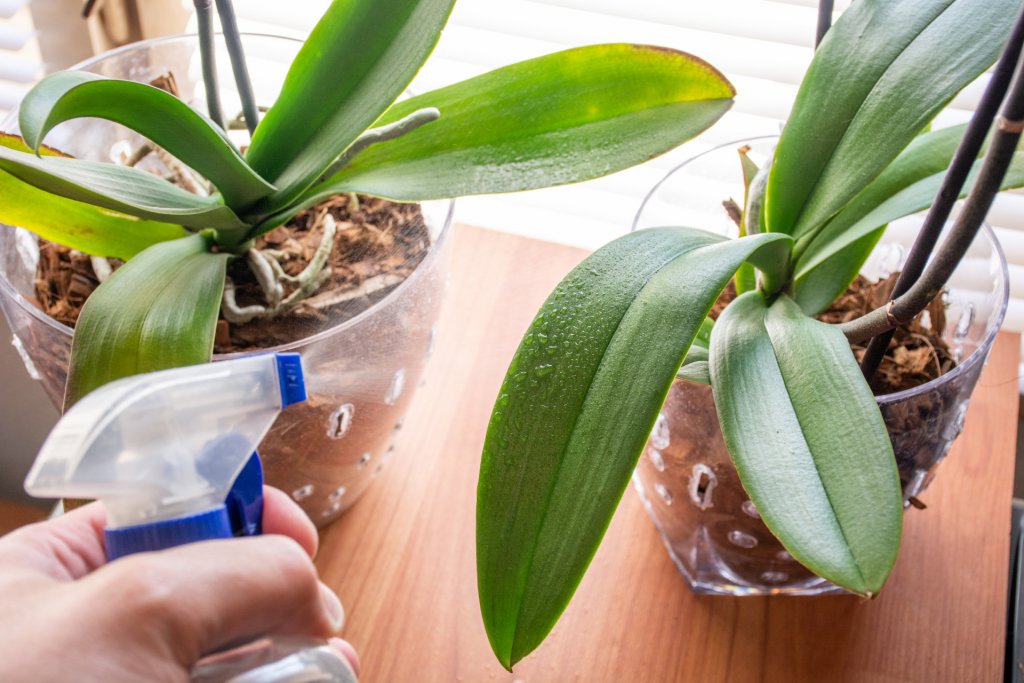
Because orchid roots cannot retain water, it is all too easy to drown the root system with overwatering.
Since most orchids take much of their water from humidity and rainfall, this tells you that orchids will gladly absorb it when their leaves are misted.
Plastic spray bottles are inexpensive and work great for this purpose.
Ambient humidity
Many orchids are grown in greenhouses because the higher moisture content to the air allows the plant to absorb moisture via humidity.
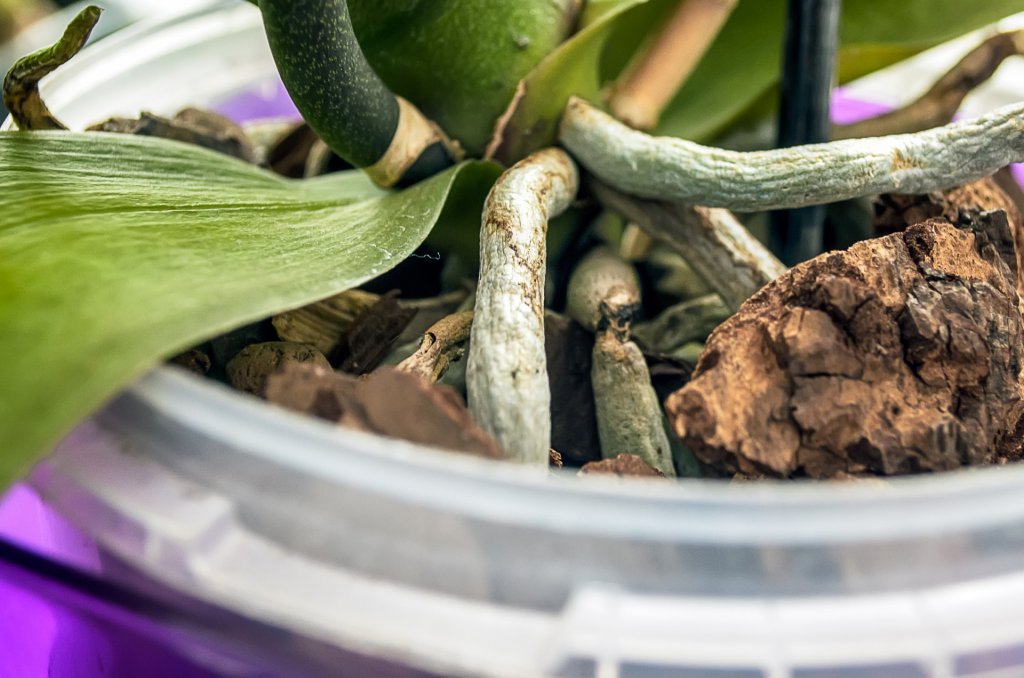
The more moisture your orchid can access via humidity, the less actual watering you will need to do.
Water in the morning, not at noon or nightfall
The best time to water your orchid is in the morning. This gives the plant all day to make use of it, from the roots to the crown.
Use the right kind of water
Overly chlorinated or treated water or softened water can harm your orchid. When available, the best type is distilled water or pure recycled rainwater.
Use a humidity dish
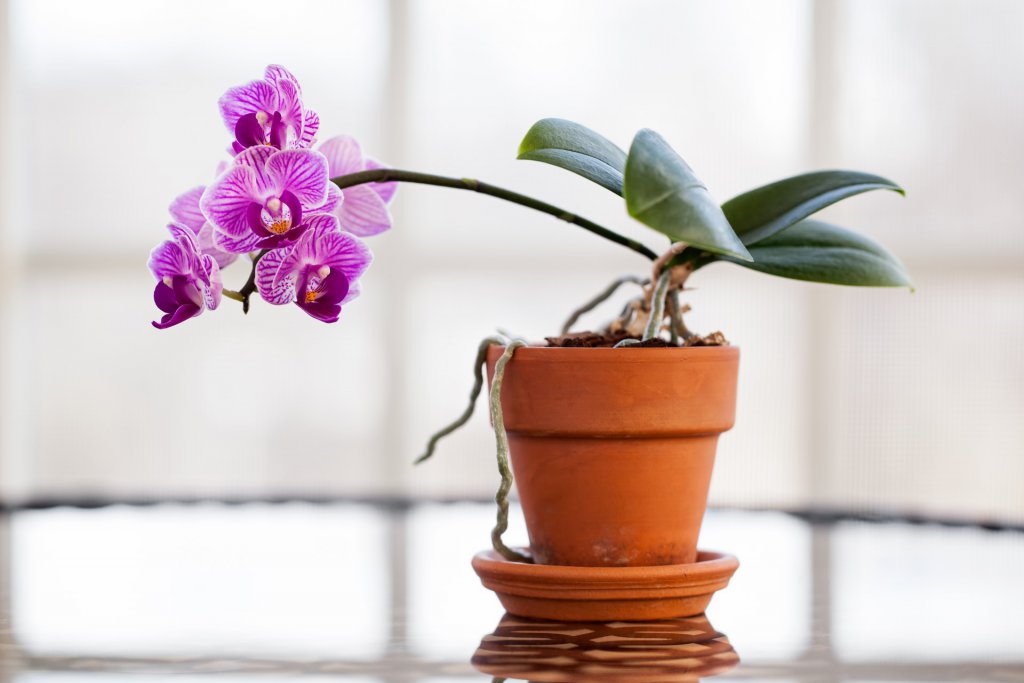
One unique way to water your orchid that most orchids love is a humidity dish (also called a humidity tray). Place a few stones in a shallow dish, fill it with water, and place the dish and stones underneath your orchid’s pot.
This allows a gentle upwelling of humid air that your orchid can readily absorb for moisture.
You can also buy these trays ready-made, if you prefer.
Other Best Practices When Watering Orchids
These additional tips for orchid watering can help ensure your orchid plant continues to thrive.
Potting media
Soil-growing orchids need the right type of soil medium to absorb water properly. The best medium is one that is specifically made for orchids.
Ice cubes
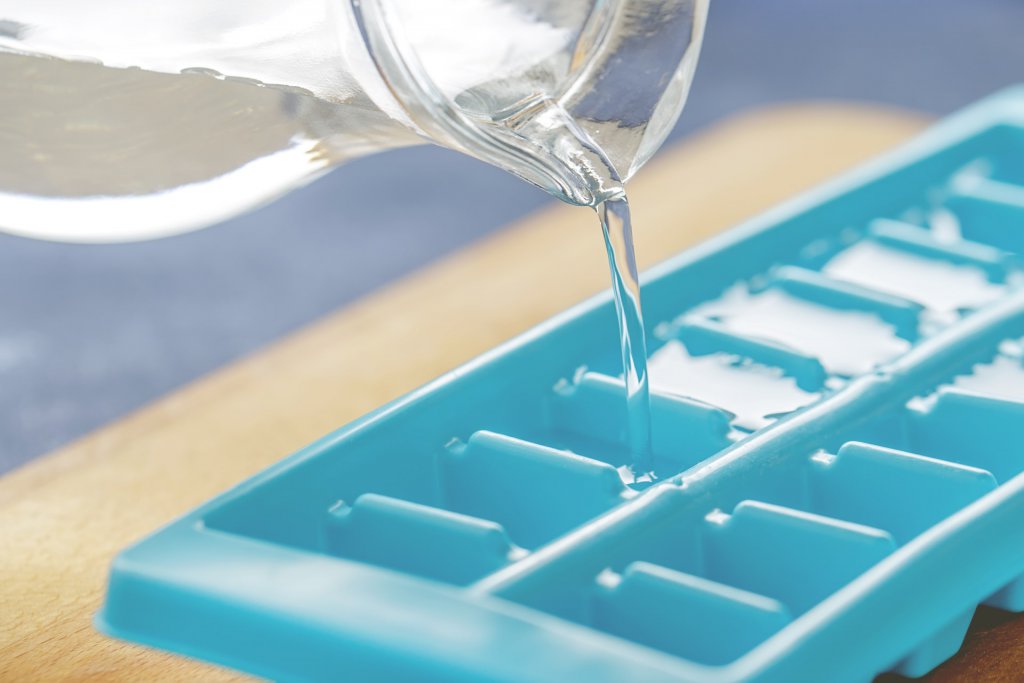
The use of orchid watering ice cubes is a handy little trick that is not well known outside of orchid grower circles.
What you do is place three ice cubes directly on the soil once per week. As the ice cubes slowly melt, the water trickles down so the plant can absorb it. This ensures you won’t inadvertently drown your orchid with water and rot out the root system.
Airflow
Orchids like some personal space, so be sure you don’t crowd your orchid in too much with other orchids or other plants.
However, be mindful that if there is more airflow or any drafts or wind, this will cause moisture to evaporate more rapidly and you may need to water more frequently as a result.
Proper daylight and dark periods
Orchids really like to have a set schedule because they need the right type of sunlight and also a period of darkness each night to thrive.
The best light for orchids is indirect natural sunlight.
The “lift test”
If you lift up your orchid pot and it is heavy, you don’t need to water. If your orchid feels lightweight, give it some water.
Special Orchid Watering Problems
Sometimes despite your best efforts, your orchid may fail to thrive. A good way to diagnose the problem is to look at the roots.
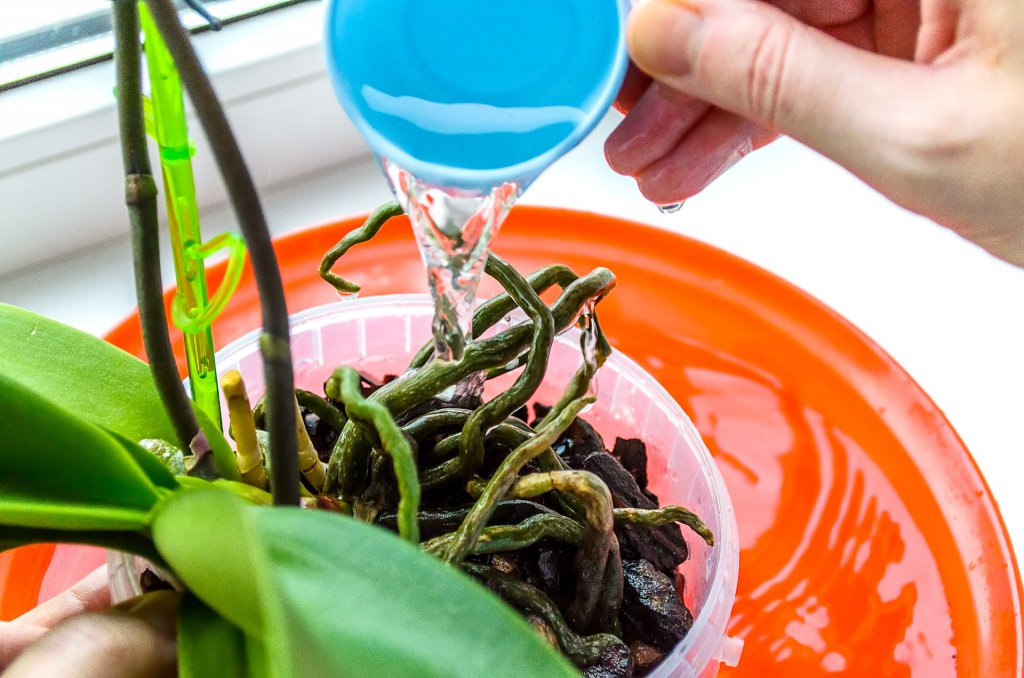
Here are some fixes to common watering issues.
Root rot
Root rot occurs when the specialized orchid root system is allowed to sit in water.
You may be able to salvage your orchid by changing to a charcoal or clay pellet-based potting medium that absorbs water and lets the roots dry out. Raising the ambient temperature can also evaporate moisture more rapidly.
Too dry
Wimpy water is born of a fear of root rot. But if you stick your finger in the soil and it feels dry, it is time to water.
The goal is to water your orchid one day before it is bone dry. A good strategy is to dunk your orchid pot in a water-filled bucket and wait until bubbling ceases.
Not sure?
A good rule of thumb is that if you are not sure if your orchid needs watering, hold off for one more day and check again.

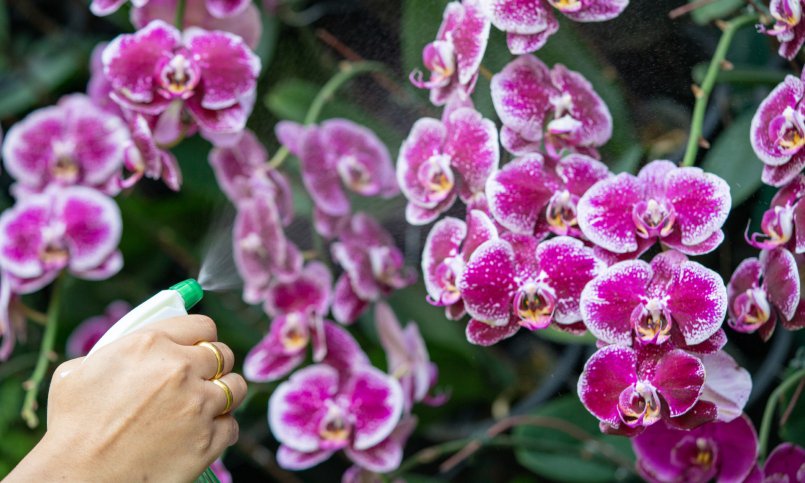
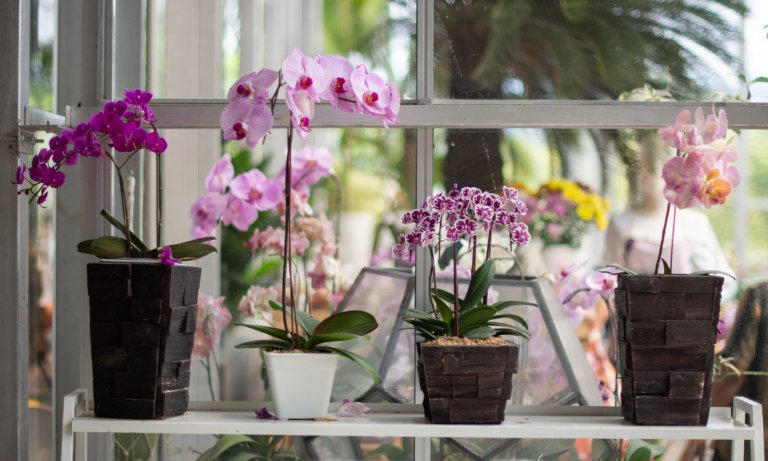


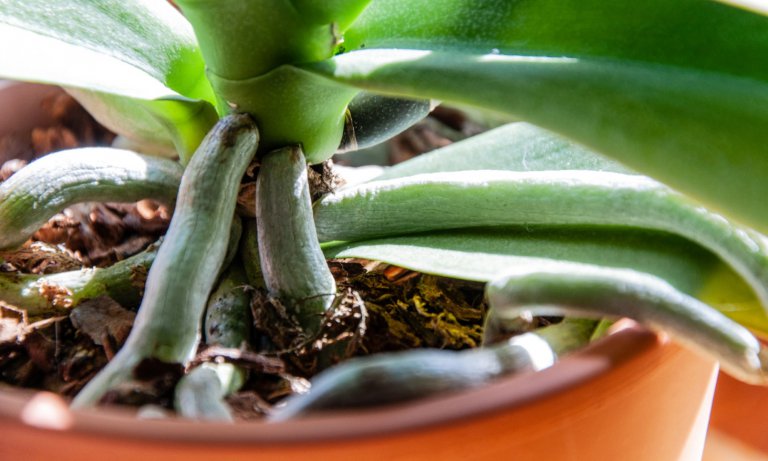
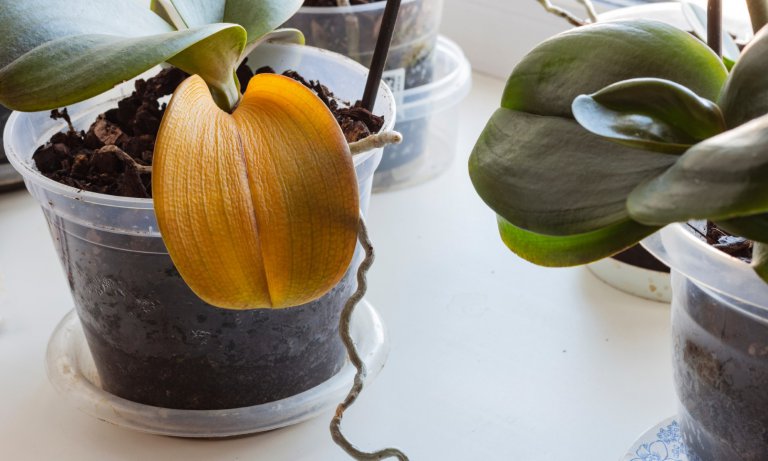

Very, very helpful. Thanks alot.
Thank you for thorough information and pictures!
Very good information, a lot of helpful things like where to buy some of the things one needs. Thank you so much!
Jeannie T.